Vanilla Bean Orchid (Vanilla Planifolia) Grow & Care Guide
Written by Iris
Jan 06 2023
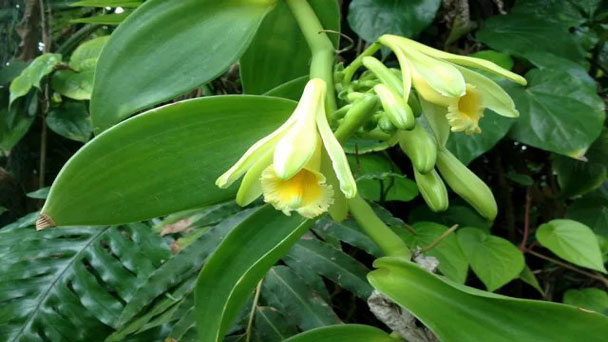
The name of Vanilla Bean Orchid (Vanilla Planifolia) is derived from the Spanish word vainilla, which means small bean pod or capsule. It refers to the fruit of the plant that looks like a pod. It is usually called vanilla bean. These fruits contain small seeds, eight to nine after flowering Month mature. A characteristic of Vanilla Bean Orchid is the root sprouting on the stem. The white, yellow-green, or cream colored flowers of vanilla orchids are usually inverted. The opening hours of these large and gorgeous flowers are very short. They open in the morning and close in the afternoon. If the flower is not pollinated when it opens, it will fall off the next day. Due to the high vanillin content of Vanilla Bean Orchid, it is considered to have high commercial value and is widely used in food processing and perfumes.
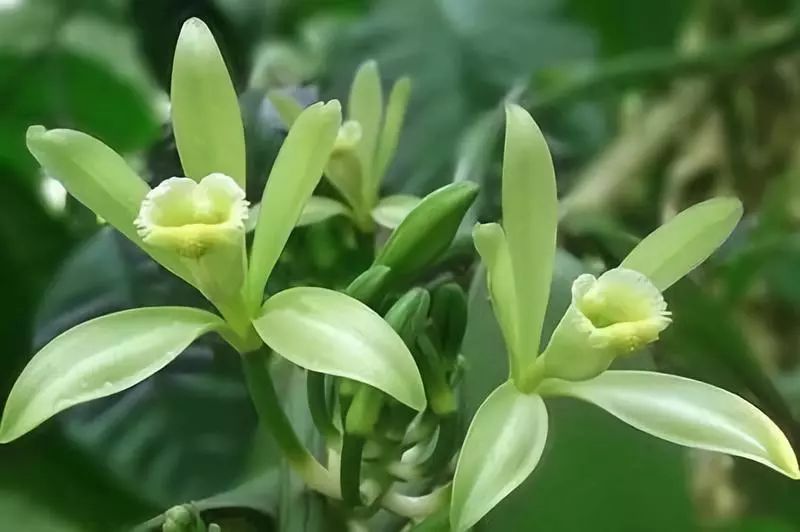
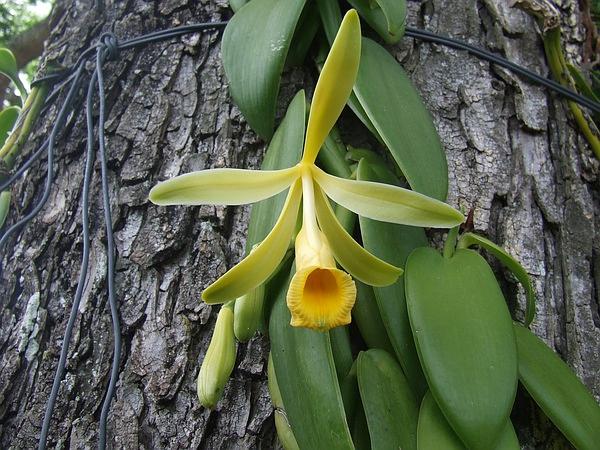
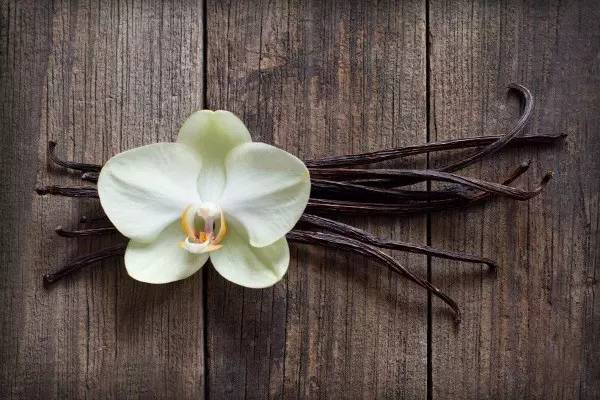
Aside from the difference in appearance, this orchid species also have a distinct taste and fragrance. It is commonly used in desserts, fresh fruits, baked goods, beverages, sauces, and more.
This particular type of vanilla is named as such because of its unusual leafless vine-like thick stems. These stems have internodes spaced at about 4 inches apart. These internodes produce short and thick sheath and roots.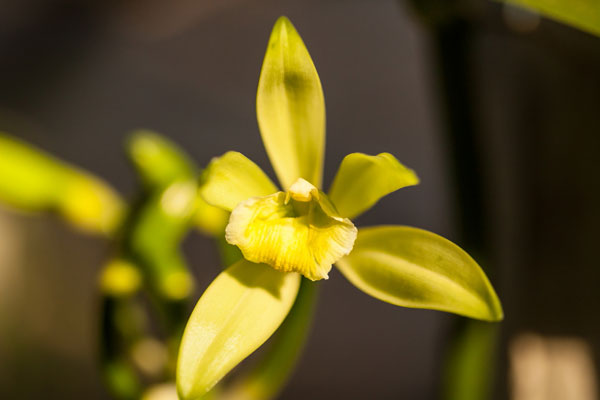
Read Next:
15 Fall Vegetables to Plant for Your Autumn Garden
What Plant Produces Vanilla
| Botanical Name | Vanilla Plantifolia |
| Common Names | Vanilla Bean Orchids, vanilla |
| Plant Type | Evergreen vining orchid |
| Sun | Part shade to full shade |
| Hardiness Zones | 11 to 12 |
| Bloom Time | seasonal bloomer; Bloom in the morning and close in the afternoon |
| Flower color | Yellow-green |
| Native Area | Mexico and Central America |
| Mature size | 8 to 10 feet |
Where to Grow Vanilla Bean OrchidHow to Grow Vanilla Bean OrchidHow to Care for Vanilla Bean Orchid (Vanilla Planifolia)Vanilla Bean Orchid Light RequirementsVanilla Bean Orchid Soil CareVanilla Bean Orchid WateringVanilla Bean Orchid Temperature & Humidity CareVanilla Bean Orchid Fertilizer CareVanilla Bean Orchid Pruning CareVanilla Bean Orchid Pests & Diseases CareVarieties of Vanilla Bean OrchidVanilla Bean Orchid Care FAQWhen Will My Vanilla Bean Orchid Produce Beans?How to Grow Vanilla Bean Orchid in Container?
Where to Grow Vanilla Bean Orchid
Vanilla Bean Orchids make excellent container house plants when grown as a vine, because this type of orchid is both epiphytic and semi-terrestrial. This means vanilla bean orchids lives above the ground where its roots attach to tree trunks or other support from which it takes in water and nutrients. In growing a Vanilla vine in a pot, some support is needed for the vine to climb on and attach itself to. This can be a post or slab of wood, preferably a type that does not rot easily like cedar or cypress.
How to Grow Vanilla Bean Orchid
Commercial growers often use 3-foot cuttings for vanilla bean orchids propagation, as that bloom sooner. Gardeners may have to settle for shorter lengths which they can wheedle from friends. In either case, the cuttings root easily, and generally don't require the use of a rooting hormone.- Purchase or ask a friend for a cutting of Vanilla Bean Orchid that has at least 6 nodes, the points where the leaves join the stems. Wrap the cutting in a damp paper towel to keep it moist until you can plant it.
- Fill a flower pot with either moist sphagnum moss or a mix of equal parts orchid bark, peat and perlite. Choose an outdoor planting spot instead, if you live in zone 10 or higher, near the base of a tree. Spade up the soil and add several handfuls of compost if the area is not well-drained.
- Remove the lowest two leaves from the cutting. Insert the base of the cutting into either the potting medium or the loose soil beneath the tree. Cover the two bottom nodes of the cutting with the potting medium or soil, packing it tightly around them.
- Push a plant stake into the potting medium behind a potted orchid cutting, and attach the cutting to it with plant ties. Tie the cutting to the tree instead, if you are starting it outdoors, and mulch the soil around it.
- Keep the potting medium or soil damp until the cutting begins to show new growth in four to six weeks. Give an indoor cutting a broader support, once it begins to vine, such as a slab of wood or a trellis.

How to Care for Vanilla Bean Orchid (Vanilla Planifolia)
Vanilla Bean Orchid Light Requirements
As covered in this article about orchids care and light, Vanilla Bean Orchids need bright natural light in order to thrive. You'll want to make sure that your vanilla orchids don't get direct sunlight because this could cause sunburn and damage the plant. When you are choosing the perfect place to grow your Vanilla Bean Orchid you will need to keep this in mind. A great place to grow vanilla orchids is in the southern end of a greenhouse because they will be able to receive indirect bright sunlight or on a shaded tree or trellis.Vanilla Bean Orchid Soil Care
Soil rich in potassium and calcium is ideal for Vanilla Bean Orchid. It should be light, well-draining, and with a pH between 6.0 to 7.0.Vanilla Bean Orchid Watering
Vanilla Bean Orchids should be watered regularly. Watering frequency – as covered in this article about watering orchids – can be determined by a few different things. The whole plant shouldn't dry out on a regular basis, however, you can let the top 2 or 3 inches of the plant dry out between waterings. On the contrary, in order to initiate flowers to bloom, you should allow the entire plant to dry out between waterings for a few weeks.Vanilla Bean Orchid Temperature & Humidity Care
Ideal temperatures for Vanilla Bean Orchid are between 60 to 70 degrees Fahrenheit at night and 80 to 95 degrees during the day. These Vanilla Bean Orchid plants are not frost-tolerant, which means those who don't live in a tropical climate must grow them in a greenhouse. Mist your plant regularly and make every effort to keep an 80 percent humidity level. At the same time, good air circulation is required to prevent fungal rot.Vanilla Bean Orchid Fertilizer Care
Fertilize Vanilla Bean Orchid plants every two weeks using a diluted, balanced orchid fertilizer. When the plants are in active growth, feed them using the “weekly, weakly” approach.Vanilla Bean Orchid Pruning Care
Vanilla Bean Orchid will not bear fruit until they are at least three years of age. When the vanilla plant is 2 ½ – 3 years old it is advisable to prune the tip if you want the vanilla plant to produce flowers.Vanilla Bean Orchid Pests & Diseases Care
Vanilla Bean Orchid are generally free from major pests and diseases. However, they are susceptible to root rot. Root rot can be a result of overwatering or a fungus in the soil. Common symptoms of this plant disease include dull and yellowing leaves, wilting, and mushy, black roots. Other common fungal diseases of Vanilla Bean Orchid plants include anthracnose, black rot, rust, and root and stem rot. Common pests include Giant African snail, vanilla bug, vanilla vine weevil, beetle, white grubs, and Achatina. (Also Read: Why Is My Orchid Stem Turning Yellow)
Varieties of Vanilla Bean Orchid
- West Indian Vanilla (Vanilla pompona)
- Tahitian Vanilla (Vanilla tahitensis)
Aside from the difference in appearance, this orchid species also have a distinct taste and fragrance. It is commonly used in desserts, fresh fruits, baked goods, beverages, sauces, and more.
- Leafless Vanilla (Vanilla aphylla)
This particular type of vanilla is named as such because of its unusual leafless vine-like thick stems. These stems have internodes spaced at about 4 inches apart. These internodes produce short and thick sheath and roots.
-
Chamisso's Vanilla (Vanilla chamissonis)
-
Mexican Vanilla (Vanilla mexicana)

Vanilla Bean Orchid Care FAQ
When Will My Vanilla Bean Orchid Produce Beans?
Your Vanilla Bean Orchids will produce beans in roughly three years. However, each plant is different and the slow coaches have been known to mature after seven years. You'll know that your plant is ready when it blooms for the first time. You might want to do serious research or practice with other orchids before you attempt to hand-pollinate vanilla. The process is delicate and tricky. But once pollinated, the beans will appear within months. After that, they will need the better part of a year to mature for harvest.How to Grow Vanilla Bean Orchid in Container?
Vanilla Bean Orchid makes brilliant container residence plant life when grown as a vine, due to the fact this kind of orchid is each epiphytic and semi-terrestrial. This capability lives above the floor the place its roots connect to tree trunks or different guides from which it takes in water and nutrients. In developing a vanilla bean orchid in a pot, some guide is wanted for the vine to climb on and connect itself to. This can be a publisher or slab of wood, ideally a kind that no longer rot without difficulty like cedar or cypress.Read Next:
15 Fall Vegetables to Plant for Your Autumn Garden
What Plant Produces Vanilla
Latest Updated
- Benefits of Bugleweed - 7 Science-backed Health Benefits
- Bugleweed Dangers & Side Effects - Is It Poisonous?
- How to Plant Evergreen Trees - What You Should Know
- When to Plant Evergreens - Grow Guide for Evergreen Trees
- 12 Wonderful Evergreen Shrubs for Your Garden
- 12 Popular Evergreen Plants with Pictures for Beginners
- When And How To Prune A Lilac Bush Like a Pro
- How to Grow & Care for Lilac Vine (Hardenbergia Violacea)
- Japanese Lilac Tree (Syringa Reticulata) Care & Propagation Guide
- Shumard Oak Pros and Cons - What to Know
Popular Articles
- Winter maintenance of Antirrhinum Majus
- How to Grow Terminalia Mantaly Tree
- How to Grow and Care for Crossostephium Chinense
- How to grow Antirrhinum Majus in spring
- Peristeria Elata (Dove Orchid) Profile: Info & Care Guide
- Underwatered Snake Plant (Sansevieria Trifasciata) - Signs And How To Fix
- How to Care for Brazilian Jasmine Plant (Mandevilla Sanderi)
- How to Grow & Care for Graptopetalum Purple Delight in Summer
- Rosa Chinensis (China Rose): Plant Growing & Care Tips
- How to Care for Baby Sun Rose (Aptenia Cordifolia)